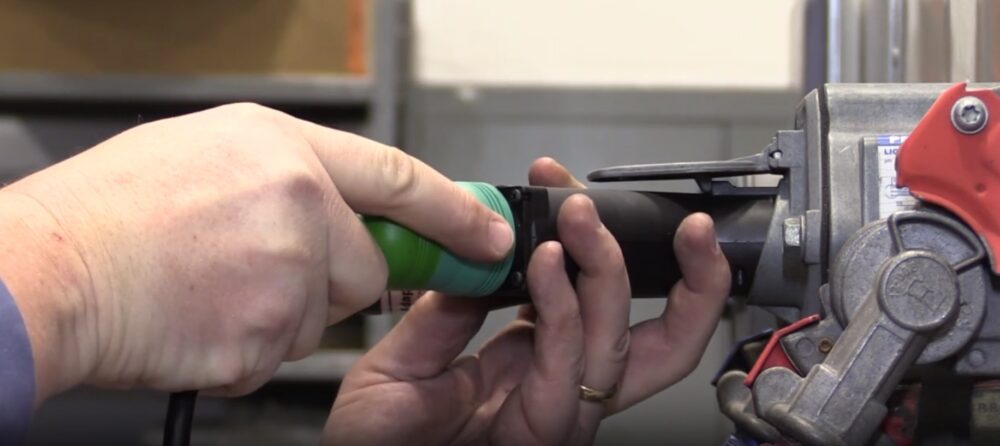For many technicians these days, the sight of a real working carburetor may be as alien as the rover roaming the dusty Martian surface. But consider the opportunities that these die-cast, zinc alloy, fossil fuel-metering Martians present to us technicians. Opportunities abound, to repair emissions failures by re-calibrating the main circuits and diagnosing high carbon monoxide failures by replacing faulty power valves. Rebuilding a 25-year-old carburetor can fix a flooding condition, a stalling issue or a dangerous hesitation.
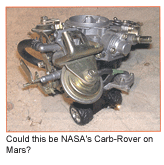 If you grew up rebuilding these “fossils” then you may already be stunning the younger techs in your shop by magically restoring all of a carburetor’s circuits so they flawlessly transition while atomizing and vaporizing fuel into a perfect stoichiometric mixture. If, however, you have no more experience working on a carburetor than on the lunar lander, than perhaps this carburetor primer will whet your appetite to dive into a diagnosis, and perhaps even a rebuild or two.
If you grew up rebuilding these “fossils” then you may already be stunning the younger techs in your shop by magically restoring all of a carburetor’s circuits so they flawlessly transition while atomizing and vaporizing fuel into a perfect stoichiometric mixture. If, however, you have no more experience working on a carburetor than on the lunar lander, than perhaps this carburetor primer will whet your appetite to dive into a diagnosis, and perhaps even a rebuild or two.
In part one of this article, I will walk through the six major circuits of a Solex-Mikuni carburetor, and discuss the similarities between our carb and many others on the road. In part two, I will highlight many carburetor repairs and “re-calibrations” to help you fix your clients’ emissions failures and driveability concerns.
If there’s one thing I’ve learned after servicing scores of carburetors, it’s that there are no expendable pieces. The engineers added a solenoid, air bleed, screw or linkage for some purpose, not just for fun. When you decide to pull the four nuts that hold the carb to the manifold, remove all of the hoses and wires, and plop that unit onto your bench, just remember while you’re tearing it apart that it’s a jigsaw puzzle that can’t lose any pieces.
If you are going to take a carburetor apart, you’re going to have a good reason to do it; one of its systems will be sub-par, resulting in an idle issue, a hesitation, a performance issue or an emissions failure. If you approach every carb bearing this thought in mind, they won’t be so overwhelming.
This Place Sucks
Unlike our Martian rover, we have atmospheric pressure on Earth that allows all carburetors to function (the Martian atmosphere is 1/100th as dense as ours, so planes can’t fly there, either). Since a carburetor operates on the principle of pressure difference, the downward stroke of the pistons in the engine provide the lower pressure needed to “suck” fuel from the float bowl of the carb. Actually, no sucking is taking place; just as you don’t suck the liquid through a straw into your mouth – atmospheric pressure is pushing the high pressure liquid through the straw into the low pressure area into your mouth – fuel is pushed from an area of high pressure (the float bowl) to an area of low pressure (the throttle body).
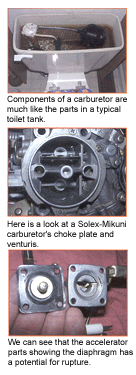 Now, although there is a pressure differential between the float bowl and the throttle bore of the carb, it isn’t sufficient to entice fuel into the air stream, so an addition is placed into the throttle bore – a venturi. This hourglass-shaped venturi creates an even greater pressure differential because it forces the air to speed up, which in turn lowers the pressure even further. You will notice that the main discharge nozzle is located at the point of maximum pressure differential in the venturi.
Now, although there is a pressure differential between the float bowl and the throttle bore of the carb, it isn’t sufficient to entice fuel into the air stream, so an addition is placed into the throttle bore – a venturi. This hourglass-shaped venturi creates an even greater pressure differential because it forces the air to speed up, which in turn lowers the pressure even further. You will notice that the main discharge nozzle is located at the point of maximum pressure differential in the venturi.
Six Critical Systems
Our Solex-Mikuni carburetor incorporates all of the following circuits, just as all carbs do:
- Choke
- Float
- Idle
- Main
- Power
- Accelerator pump
All Choked Up
All choke systems use a choke plate in the air horn of the carb that closes when the engine is cold through a thermostatic spring. The choke provides needed fuel enrichment for all of the fuel metering systems. These thermostatic springs are usually warmed by an electric choke heater that begins drawing current when the engine is started, although hot air chokes that utilized heat from the exhaust manifold were used way back in the day.
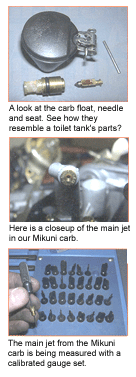 The choke system on our Mikuni uses a wax pellet choke assembly that is heated by engine coolant. If the coolant level is low (which would also result in low heater output) or if the pipes become plugged, the choke will never fully open. All carbs also incorporate a pull-off diaphragm that receives manifold vacuum at start-up, forcing the choke open to an adjustable specification.
The choke system on our Mikuni uses a wax pellet choke assembly that is heated by engine coolant. If the coolant level is low (which would also result in low heater output) or if the pipes become plugged, the choke will never fully open. All carbs also incorporate a pull-off diaphragm that receives manifold vacuum at start-up, forcing the choke open to an adjustable specification.
If a choke fails to close, a customer will complain of hard starts and having to pump the gas to keep the engine alive when cold. If a choke does not open when warm, high CO emissions and poor fuel mileage will result. In addition, if a choke pull-off diaphragm fails to open due to an internal rupture or lack of vacuum, the engine will start, and then die due to an overly rich mixture.
The Toilet Bowl
We’ve all removed the top from our toilet tanks and watched in amazement as we flush, see the water come rushing into our tank, and finally stop when the float rises to its pre-adjusted level (I need to get a life). Heck, you’ve probably screwed around with that adjustment yourself, haven’t you?
Well, the float bowl, float, needle and seat in our carb work exactly like the one in your toilet, and the same failures can occur in a carb. If the needle valve becomes old or dirty, it may leak. If this happens in a toilet, the excess water runs into the bowl to prevent a flood on your floor. If this happens in a carb, the engine will flood with excess fuel and will stall.
If the needle and seat are functioning as they should, then the level will always be determined by the float adjustment. Too low and all circuits of the carb will starve for fuel; too high and the engine will run too rich. Barring these issues, the float system is virtually fail-safe, unless your customer owns a rock crawler, then modifications must be made to prevent sloshing and flooding.
The float level and drop adjustments are already “pre-set” in a rebuilt, off-the-shelf carburetor. Beware: I’ve had to pull the tops off of some of these units to perform the correct calibration for the engine it now feeds with fuel. Never assume that a rebuilt carb will be perfect in every way.
Idle Circuit
This circuit is home to the most abused screw on the carburetor – the idle mixture screw. More do-it-yourselfers crank this screw counter-clockwise in an attempt to cure rough idle, stalling and poor performance concerns.
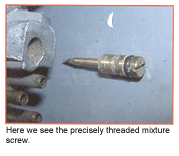 This circuit is very susceptible to dirt due to the tiny passages in the fuel portion and the air bleed orifices. Many carburetors have all circuits functioning well except for the idle circuit; the car will simply run rough, or die, when allowed to sit at idle for an extended period of time. Attempts are often made to remedy this by removing the mixture screw and forcing compressed air back through the port, but it rarely works. By the time dirt has made its way into this circuit, there are probably many miles on the odometer, and a perfect situation exists for a simple carb overhaul to clean out all of the dirt and replace all of the soft parts, such as the needle and seat, that can fail after extended exposure to decades of heat and fuel.
This circuit is very susceptible to dirt due to the tiny passages in the fuel portion and the air bleed orifices. Many carburetors have all circuits functioning well except for the idle circuit; the car will simply run rough, or die, when allowed to sit at idle for an extended period of time. Attempts are often made to remedy this by removing the mixture screw and forcing compressed air back through the port, but it rarely works. By the time dirt has made its way into this circuit, there are probably many miles on the odometer, and a perfect situation exists for a simple carb overhaul to clean out all of the dirt and replace all of the soft parts, such as the needle and seat, that can fail after extended exposure to decades of heat and fuel.
The Main Circuit
The main fuel metering system is designed to supply the fuel required for engine operation during the cruise or part-throttle range. This system comes into play when the air flow through the carburetor venturi creates enough vacuum (pressure differential) to draw fuel through the main discharge tube. The amount of fuel that flows from the main nozzle is directly proportional to engine speed, because higher air flow through the carburetor venturi lowers vacuum, drawing even more fuel through the main jet and into the engine.
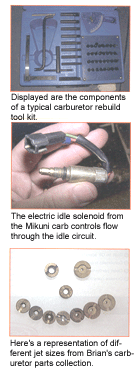 Fuel enters the main circuit through a calibrated jet that is threaded into the bottom of the float bowl. This is the piece that is often changed if a vehicle fails for high CO under cruise conditions. For years, drag racers have carried jet assortments – strip kits – with them to the track so they can swap jets to optimize fuel delivery and performance.
Fuel enters the main circuit through a calibrated jet that is threaded into the bottom of the float bowl. This is the piece that is often changed if a vehicle fails for high CO under cruise conditions. For years, drag racers have carried jet assortments – strip kits – with them to the track so they can swap jets to optimize fuel delivery and performance.
These large main jets usually do not plug, but often the air bleeds that live in the air horn of the carburetor will. These bleeds have small orifices that can plug. If they do, air will not mix with the main jet fuel, resulting in poor atomization of the gasoline.
If the carburetor has a mixture control solenoid that is computer controlled, then the main circuit fuel mixture will be partially under the control of whatever decisions the computer makes, either good or bad. Poor performance on these model carbs can be traced to bad computer inputs, resulting in an incorrect dwell reading for the fuel mixture control solenoid. We’ll discuss these carbs in greater detail in part two of this article.
More Power, Scottie!
When you shove the gas pedal to the floor on one of these carbureted cars, you need an extra blast of fuel to get your Pinto moving, so there’s a power circuit. Carburetors use manifold vacuum to control this circuit, because manifold vacuum is high when power demand on the engine is low. Conversely, when the intake manifold vacuum is low, the engine is operating under a high power demand.
If the power valve used has a rubber diaphragm, then the possibility exists that the rubber will rupture, allowing raw fuel to be drawn into the intake by the manifold vacuum. This always results in an extremely rich-running condition. Sometimes, however, the power valve has not ruptured, but the power circuit is contributing to an overall high CO failure. This requires recalibration of the power circuit by altering the spring pressure that is used to resist manifold vacuum when the throttle is opened. A higher spring pressure will allow the valve to remain closed until a lower vacuum (greater throttle opening) is achieved. I have seen a simple recalibration of this circuit reduce overall CO emissions by 90%!
Accelerator Pump Circuit
This is simply the system of pieces that supplies that little squirt when you open the throttle. It provides the prime for the engine prior to a cold start, and it compensates for the momentary lag between sudden throttle opening and delivery of fuel from the main discharge tube into the venturi.
Failure of this circuit can result in long crank times with a cold engine, or a no-start altogether. Absence of this little “squirt” will always cause a brief hesitation each time the throttle is opened, because the engine won’t have sufficient fuel to accelerate until fuel is pulled from the main well.
The pump on our Mikuni is a four-bolt rubber diaphragm that is actuated by a lever attached to the throttle. Failure of this diaphragm will result in raw fuel squirting externally from the carb.
Alien No More
Familiarity with one style of carburetor will elicit confidence in repair of that particular model, and it will give you confidence to tackle different versions of what is basically a tiny toilet bowl with bolt-on accessories.

